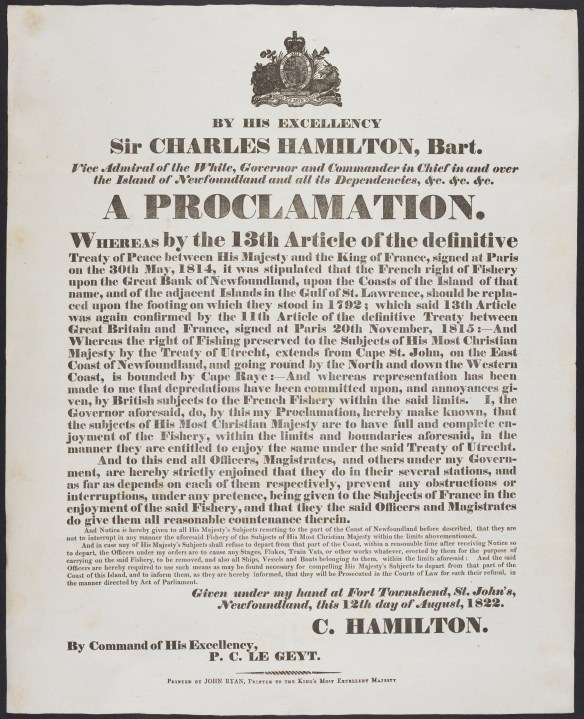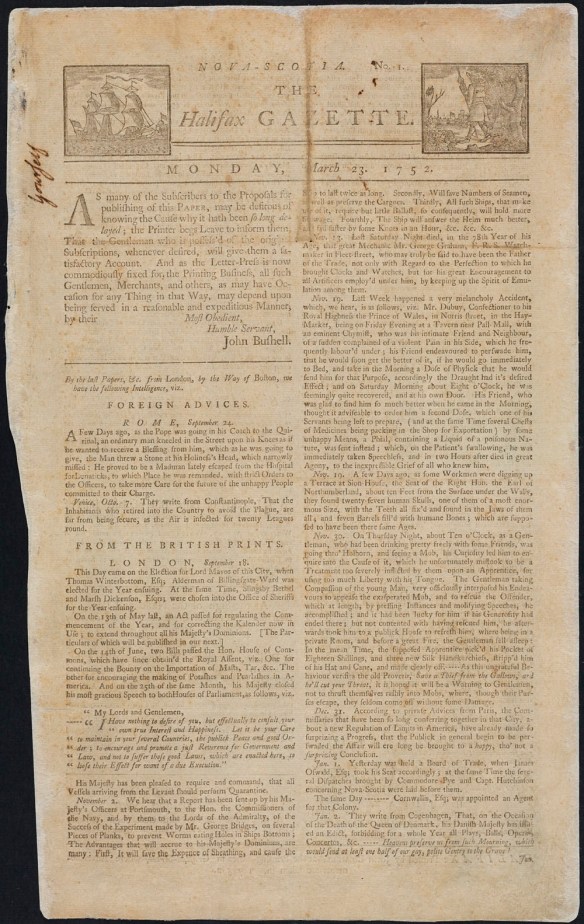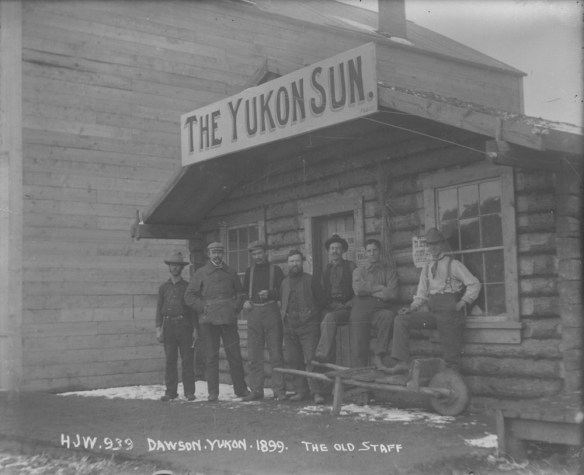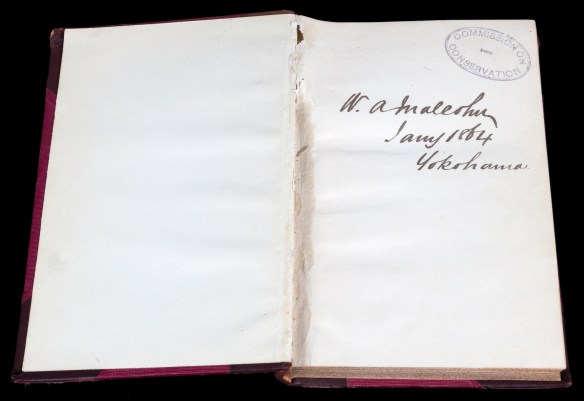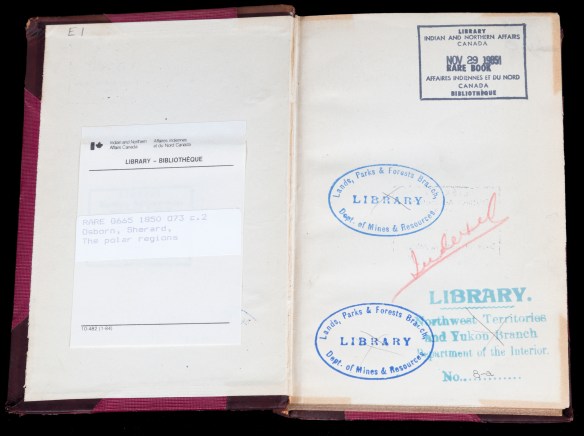By Meaghan Scanlon
Library and Archives Canada (LAC) recently acquired a copy of the book Relation de ce qvi s’est passé en la mission des pères de la Compagnie de lésvs aux Hurons, pays de la Nouuelle France, és années 1648. & 1649. The acquisition was supported by the Library and Archives Canada Foundation.
Published in Paris in 1650, the book is part of a series of publications known as the Jesuit Relations. The Jesuit Relations are reports written by Jesuit missionaries who were stationed in New France. Published annually from 1632 to 1673, these reports served to update the missionaries’ superiors in France about the progress of the mission. Through their publication, the Relations became widely available and thus also helped build support among the French public for the Jesuit efforts in New France. While the content of the Jesuit Relations must be viewed in the colonial context of their production, the books are nonetheless significant documents of the history of New France. They are a valuable—albeit one-sided and heavily edited—source of information about the Indigenous peoples of the area known as New France and their early interactions with the European settler missionaries.
The item purchased by LAC is the first edition of the Jesuit Relation that details the events of the years 1648 and 1649. The credited author, Paul Ragueneau, was the superior of the Jesuit mission in the territory of the Huron-Wendat people. The report deals with major historical events. These include the conflict between the Haudenosaunee (Iroquois) and the Huron; the resulting destruction of the Jesuits’ mission in Huron territory (Wendake) by the Haudenosaunee; and the deaths of Jesuits Jean de Brébeuf and Gabriel Lalemant, both of whom were later canonized by the Catholic Church.
LAC’s Rare Book Collection focuses on Canadiana published before 1867. (LAC defines published Canadiana as publications produced in Canada, about Canada, or created by people from or with ties to Canada.) Within the Rare Book Collection, LAC has an outstanding collection of about 65 Jesuit Relations. While LAC does not have a copy of the earliest report published in 1632, it does hold at least one copy of one edition for almost every subsequent year.
Today, the Jesuit Relations are considered “important” rare books, but they were likely viewed as more akin to mass market literature at the time of their publication. This historical perception is reflected in the way the copies in LAC’s collection are bound. Several of the books are in “limp vellum” bindings. A limp binding is opposed to a hardcover binding, in which the book’s cover materials are glued to some type of board to create a hard cover. With a limp binding, there are no boards. Think of limp bindings as the historical equivalent to paperback books, except that instead of paper, the covers of older books are usually made of animal skin. In the case of many of LAC’s Jesuit Relations, the specific skin used is known as vellum, hence the term limp vellum.
Just as modern paperbacks are now an economical option, limp bindings would have been less expensive for seventeenth-century book buyers than hardcover books. Another sign of the inexpensive nature of the bindings of the Jesuit Relations in LAC’s collection is that they are also mostly very plain, with no decorations other than the titles handwritten in ink on the spines. Additionally, the books tend to be very small, typically around 20 cm in height.
The new acquisition is so slight, in fact, that the delivery person who brought it to LAC said he was sure he was dropping off an empty box! It too is in a limp vellum binding. Interestingly, its vellum cover is made from an old piece of sheet music that looks as though it could date from the sixteenth or seventeenth century. Historically, it was common for bookbinders to use scrap materials like old manuscript pages in their work. Of course, recycling supplies is a way to save money, and a cover made from reused vellum is perhaps another indication that the book in question was considered “cheap,” for lack of a better word.
However, there are signs that this binding does not date from the time of the book’s publication. The endpapers are made of different, newer paper than the text block of the book. The margins of the book’s pages are also very thin, indicating that the pages were cropped at some point, likely when the book was rebound.
The specific details of what alterations may have been made to this book over its lifespan are a mystery for LAC’s book conservators to attempt to unfold. However, if, as it appears, the volume was rebound at some point in the almost 400 years since its publication, whoever did the work made the effort to use materials and techniques faithful to those that might have been employed during the era when the book was originally published.

Cover of LAC copy 2 of Relation de ce qvi s’est passé en la mission des pères de la Compagnie de lésvs aux Hurons, pays de la Nouuelle France, és années 1648. & 1649, published in Paris by Sébastien Cramoisy, 1650 (OCLC 1007175731).
Additional resources
- Jesuit Relations of Canada, 1632–1673: A Bibliography, by James C. McCoy (OCLC 596865)
- The Jesuit Relations at the National Library of Canada, from National Library of Canada, Bulletin, v. 33 no. 3 (May/June 2001)
- Guest Curator Meaghan Scanlon, by Meaghan Scanlon, Library and Archives Canada Blog
Meaghan Scanlon is a Senior Special Collections Librarian in the Published Acquisitions Division at Library and Archives Canada.




